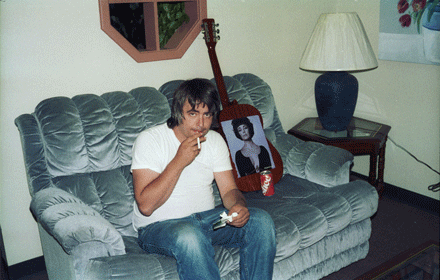only magazine
↵ home
The Little Search Engine That Could

By only
Saturday April 1, 2006
Change the way we make documentaries
I’m fairly certain that it was John Intini, writing in the pages of Maclean’s, who said that our definition of intelligence has evolved; that we now place a greater emphasis on knowledge of resources — knowing where to look for information — than on information itself. As someone who has just admitted to having read Maclean’s, I have a vested interest in combating the idea that the new intelligence is all about looking in the right places — but recent trends in documentary filmmaking validate Intini’s theory. For better or for worse, the Google-search age has made its imprint on the art of the documentary, producing a crop of films in which archival material and pre-existing photographs, as well as audio and visual recordings, are strung together into a coherent narrative through a series of interviews conducted by the filmmaker. Last year’s success on this score was the brilliant Enron: the Smartest Guys in the Room; the whipping boy was Why We Fight, which had some critics calling for a “moratorium” on this sort of filmmaking. Director Jeff Feuerzeig’s The Devil and Daniel Johnston is a shining example of why such a moratorium should never be allowed to happen.
The Devil and Daniel Johnston is unique among the retrieval school of documentaries in the sense that it is a biography; specifically that of singer-songwriter and visual artist Daniel Johnston, not the Devil — though the latter often seems incarnate in the former’s lifelong battle with mental illness. Certain idiosyncratic (perhaps neurotic, or even psychotic) tendencies in Johnston’s life made retrieving the archival bases for a filmic biography possible, as he has recorded film, photographic, illustrated and audio footage of himself from a very early age. Johnston was introduced to the wide world briefly during the 1980s, on MTV, and again in the 1990s, when Kurt Cobain began wearing a Daniel Johnston t-shirt to successive photo shoots and performances.
It is clear, and from all accounts, that Johnston is a genius — the cassette recordings of his haunting compositions marble the picture fantastically. What is equally clear, though, is that his affliction with manic depression, delusions of grandeur, and hallucinatory religiosity are destroying him and everyone around him. Particularly heartbreaking are episodes with Johnston’s devoutly religious and decent parents, as well as with a manager overtaken by a worshipful orientation to Johnston’s music.
Out of this, Feuerzeig’s picture asks some fairly stock questions about madness (or sickness) and creativity; questions that have become clichés partly because they are, admittedly, so compelling. Is the suffering of, or around, one human life worth the price if it produces great art? Are those who help or treat the artist guilty of stifling creation to which the world has a right?
The reason that the film works is the same reason why Enron: The Smartest Guys in the Room did: the presentation of archival materials is born again, made original, by engaging and captivating presentation. Close-ups on old recorders, for instance, turn Johnston’s old cassettes into figures in and for themselves, telling us of his life, turning and stopping with the only constancy offered up by this man’s story.
This is a wildly original, exciting, and fascinating story told expertly. So check out this movie. You could look it up on Google, maybe, or imdb.
(The Devil and Daniel Johnston plays at the Cinematheque on the 19, 2006)
??Charles Demers is the culture editor for Seven Oaks Magazine??
